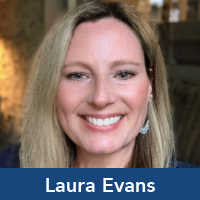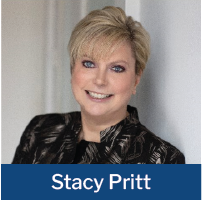On May 17, 2022, PRIM&R hosted a webinar entitled, Complex Conflict of Interest (COI): Understanding the COI Landscape with Laura Evans, MA, CIP, Senior Policy Analyst and Director, Johns Hopkins University, Homewood IRB, and Stacy Pritt, MS, DVM, MBA, CPIA, CHRC, DACAW, Associate Vice President, Research Support & Regulatory Management, University of Texas Southwestern Medical Center in Dallas (UTSW). This webinar was designed to help the research community understand conflicts and methods of conflict management so we can be better stewards of the public trust in research. Below is their summary.
As many of us know, conflicts of interest (COI) are becoming ever more complex and increasing as various translational activities are encouraged. Financial interests are changing as new models of financial compensation emerge and the types of outside activities that researchers engage in are transforming. In many cases, our transitions to remote work and virtual platforms for information sharing are driving this complexity.
During the pandemic, the traditional on-site work or even the occasional conference call for consulting drastically changed. Travel was replaced by virtual meetings, and time spent on outside activities decreased the removal of time spent in airplanes and cards. What replaced this was the move to digital experiences and networks that have made conflicts of interest more complex.
Some examples of what we have encountered include the contractual promotion of services or products on social media platforms, participation in sponsored webinars and other virtual presentations to provide research or educational updates, virtual interactions with investors to discuss the science behind new technologies, and uncompensated outside activities with the potential for compensation or equity interests after certain milestones are met. Further, when the financial interests of those in positions of leverage and power intersect with personal commercial activities, the intricacy of these relationships must also be considered.
It can be hard for COI professionals to keep up with the ever-changing models for compensation, consulting, and equity interests, which just adds to the complexity. Different institutions create wholly unique and varying strategies to manage these current and newly challenging COI relationships. To us, this means that it is more important than ever to share experiences and conflict of interest best management practices that work. Laura and I were happy to be a part of this effort to share amongst colleagues, and we hope to do so again in the future.
 Laura Evans, MA, CIP, has spent the last 15+ years in the field of human research protections, including IRB Coordinator, Senior Consent Form Specialist, IRB Analyst, and currently as an IRB Director. She manages the Human Research Protections Program for Johns Hopkins University’s Homewood IRB responsible for reviewing social, behavioral, and educational research (SBER) from six different schools/divisions of the University. In addition, she supervises compliance with the University’s Conflict of Interest and Commitment polices for two schools/divisions.
Laura Evans, MA, CIP, has spent the last 15+ years in the field of human research protections, including IRB Coordinator, Senior Consent Form Specialist, IRB Analyst, and currently as an IRB Director. She manages the Human Research Protections Program for Johns Hopkins University’s Homewood IRB responsible for reviewing social, behavioral, and educational research (SBER) from six different schools/divisions of the University. In addition, she supervises compliance with the University’s Conflict of Interest and Commitment polices for two schools/divisions.
 Stacy Pritt, DVM, MS, MBA, CPIA, CHRC, EXCS, EXoP(EAR), DACAW, is the Associate Vice President for Research Support and Regulatory Management at the University of Texas Southwestern Medical Center. She also holds a faculty appointment as Assistant Professor of Psychiatry (Ethics Division).
Stacy Pritt, DVM, MS, MBA, CPIA, CHRC, EXCS, EXoP(EAR), DACAW, is the Associate Vice President for Research Support and Regulatory Management at the University of Texas Southwestern Medical Center. She also holds a faculty appointment as Assistant Professor of Psychiatry (Ethics Division).
Dr. Pritt is a recognized authority on animal program regulatory compliance. She regularly speaks to research audiences and has authored more than 25 publications on management and regulatory compliance. A recipient of numerous awards, Dr. Pritt serves on the Board of Directors for the American Society of Laboratory Animal Practitioners (ASLAP) and Americans for Medical Progress (AMP). She is a past-president of the American College of Animal Welfare (ACAW) and Laboratory Animal Welfare Training Exchange (LAWTE).


No comments! Be the first commenter?